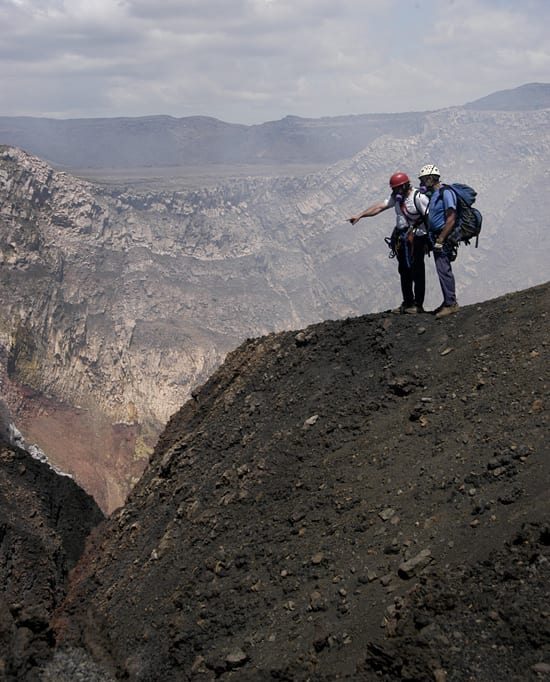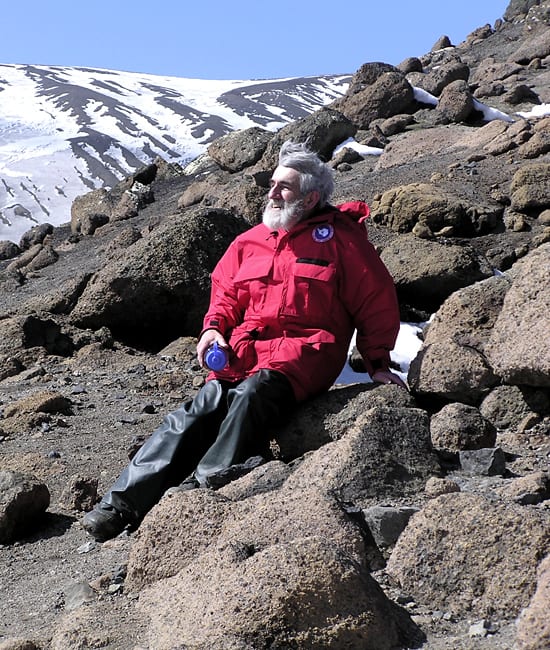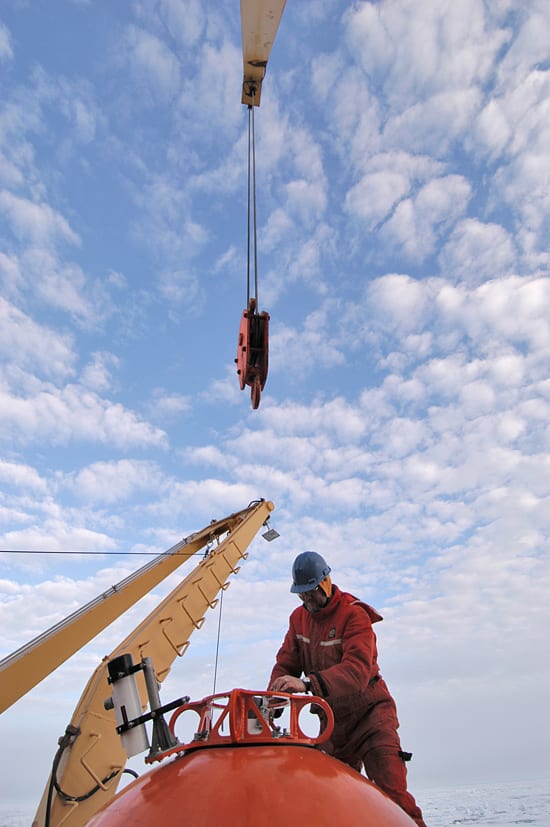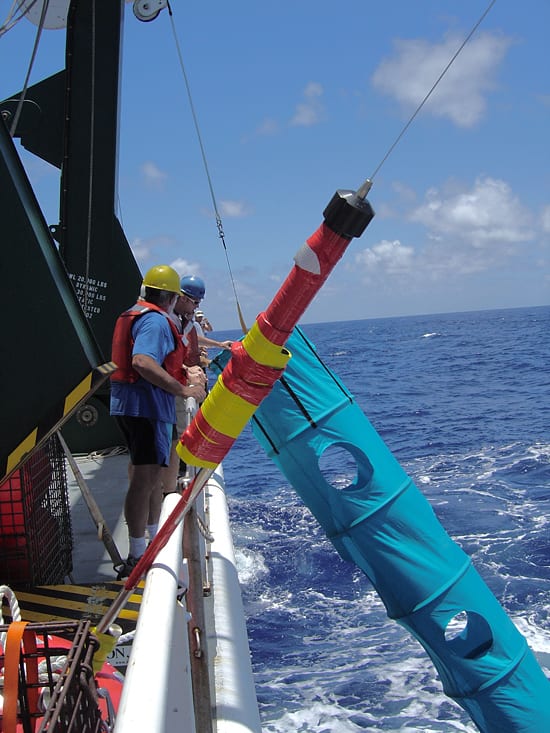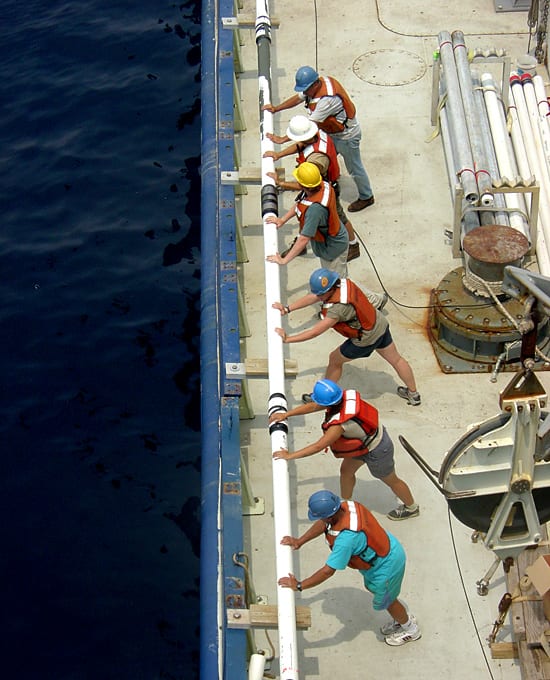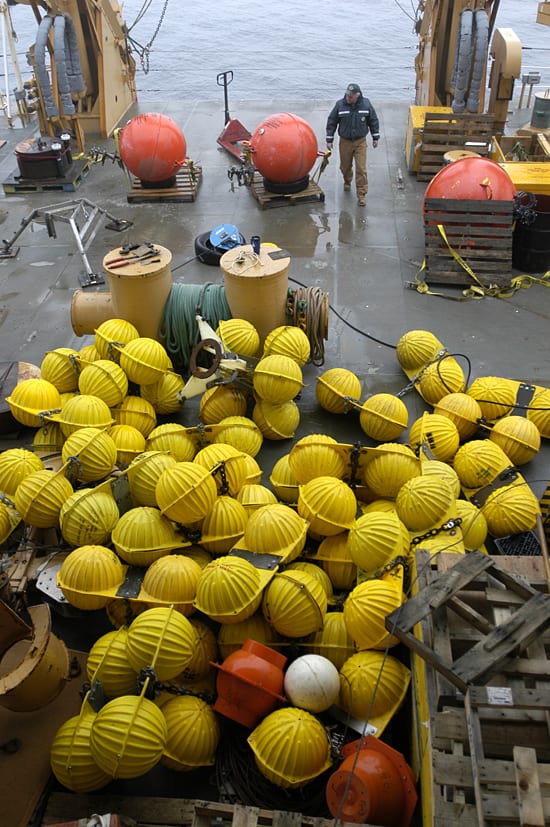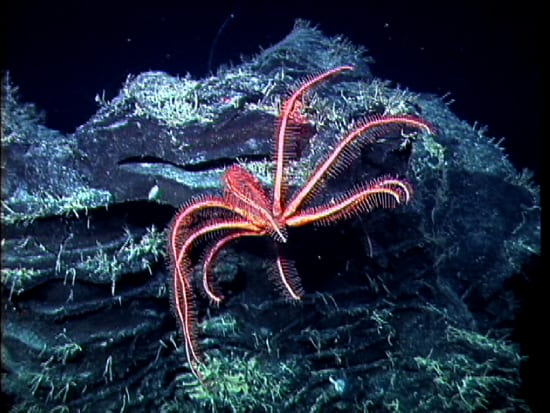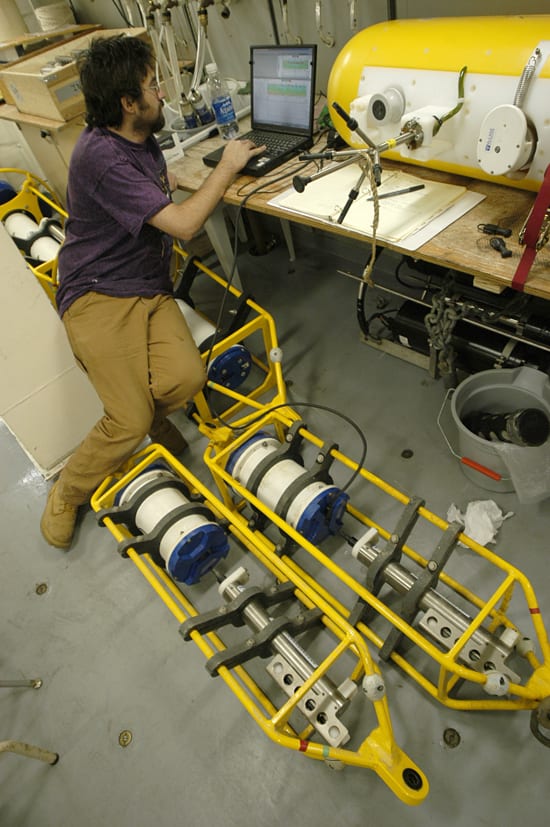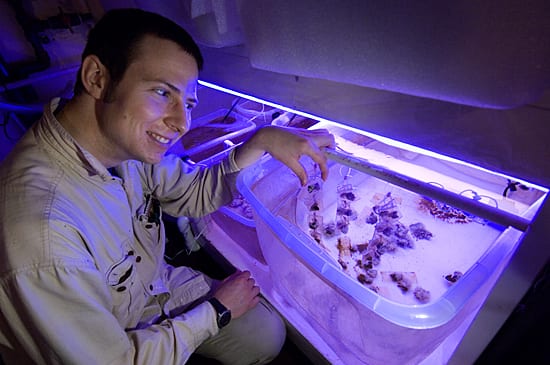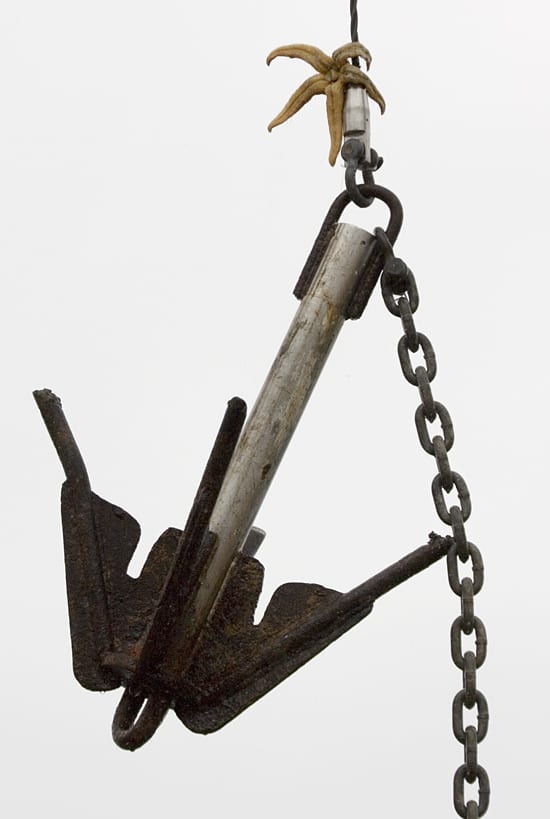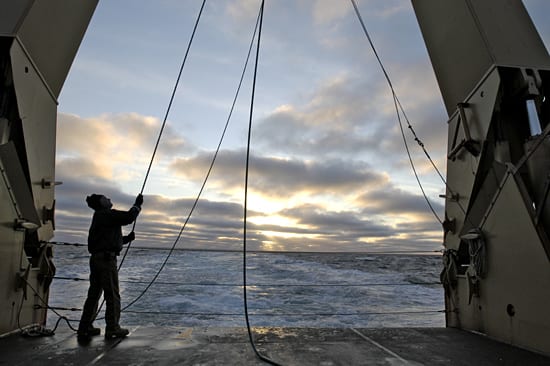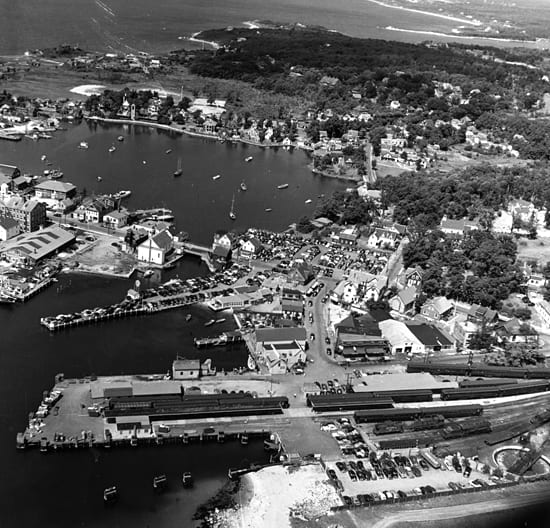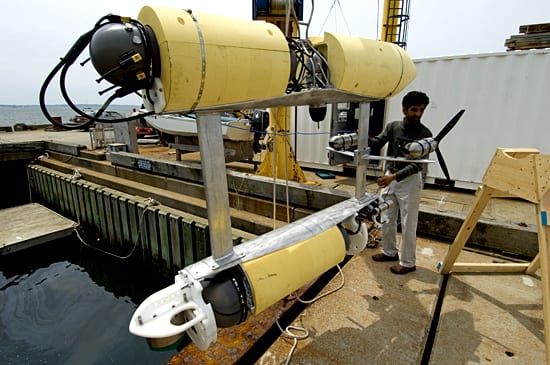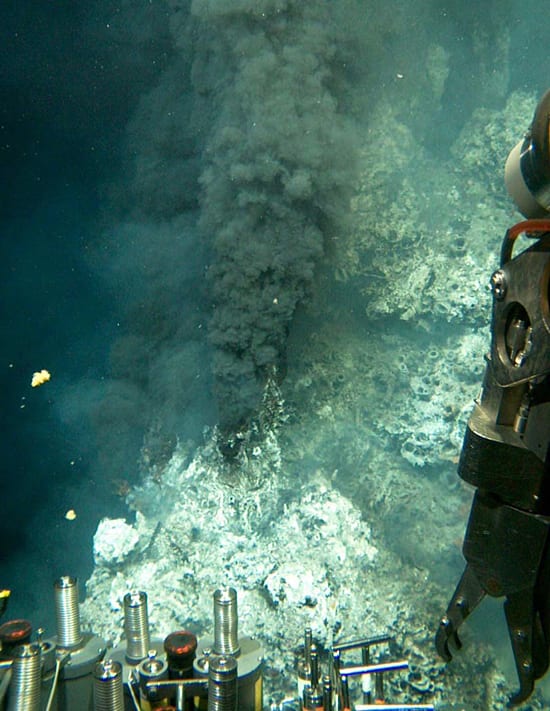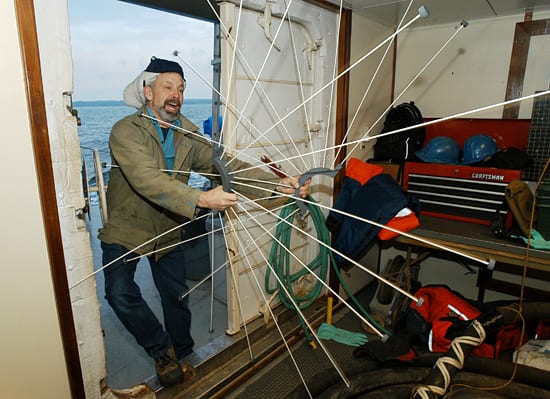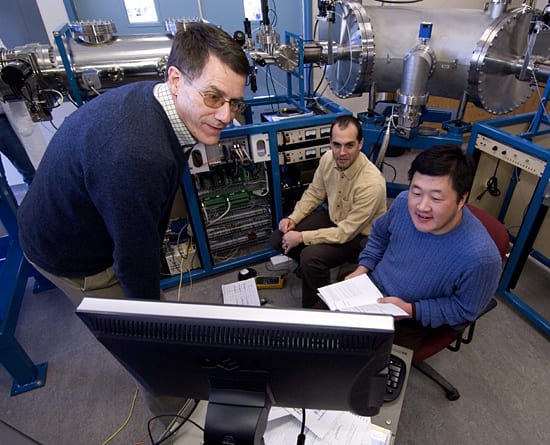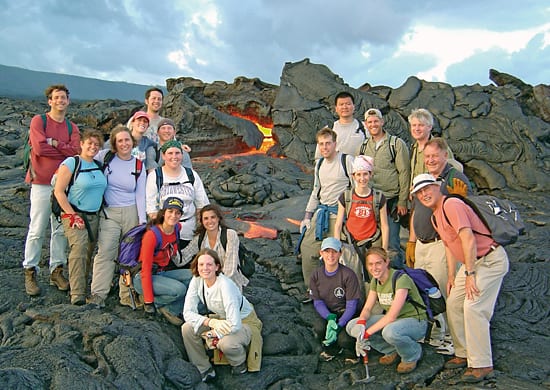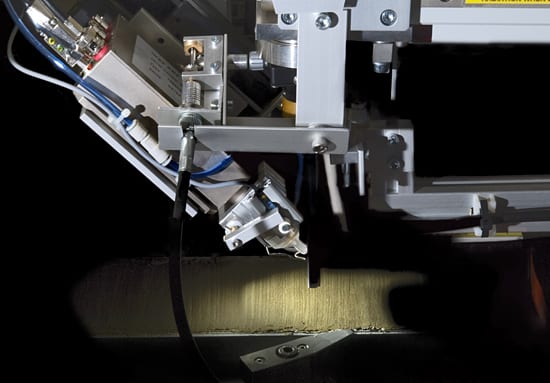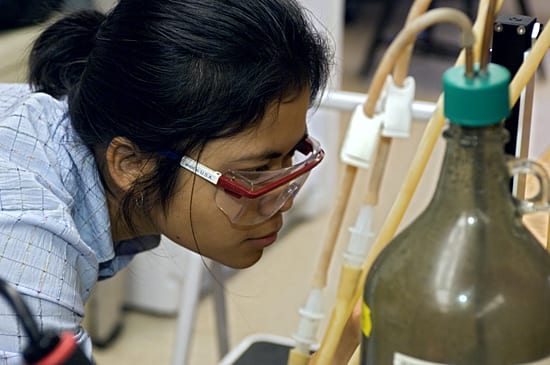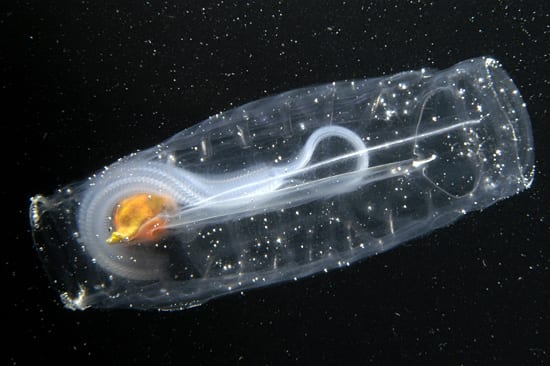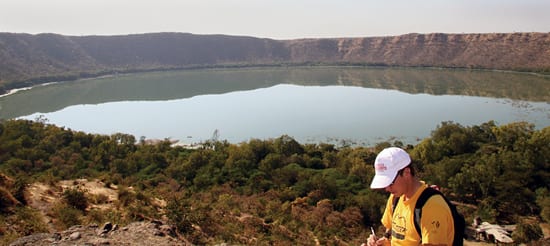Multimedia
View from the Top
WHOI geochemist Ken Sims and climber Dennis Jackson overlooking Masayavolcano in Nicaragua. By gathering gas samples from volcanoes worldwide, Sims is exploring how Earth is evolving and how volcanic gases cause climate…
Read MoreA Celebration to Remember
Marine Biologist Rudy Scheltema pauses during a climb of a volcanic crater on Deception Island two years ago. Rudy recently celebrated his 80th birthday during a research expedition to Antarctica…
Read MoreSkilled Hands
Carl Johnson runs a sample in the nuclear magnetic resonance (NMR) spectrometer, part of the WHOI Nuclear Magnetic Resonance Spectrometry Facility. The facility provides specialized, state-of-the-art analytical services for marine…
Read MoreOn Top of the World
Rick Krishfield prepares a mooring for deployment in the Arctic Ocean, part of circulation and climate studies for the Beaufort Gyre Exploration Project. The field program began in 2002 and…
Read MoreHeavy Lifting
Helicopter pilot Christopher Swannell transfers mooring gear to the research site in the Arctic during the Beaufort Gyre Observing System expedition in 2005. (Photo by Chris Linder, Woods Hole Oceanographic…
Read MoreColorful Collectors
Researchers retrieve a “holey sock” drogue (blue cyclinder) and an antenna unit from a second trap (orange/yellow device) near Hawaii during the VERTIGO experiment. The results will help improve computer…
Read MoreAll Together Now
Scientists and crew aboard the research vessel Knorr recover a sediment core from the seafloor during a cruise off the U.S. East Coast. Cores provide evidence of changes in the…
Read MoreHardhat Heaven
A pile of yellow hardhats, which cover glass spheres and are used as flotation on moorings, cover the fantail of the USCG icebreaker Healy. (Photo by Chris Linder, Woods Hole…
Read MoreStars of the Sea
A brisingid or seastar rests on an East Pacific Rise lava formation at a depth of 2.5 kilometers (1.5 miles). These filter feeders hold their arms aloft in the water…
Read MoreData Delivery
Dan Torres extracts data collected by acoustic doppler current profilers (ADCPs) aboard ship. Scientists use the instrument to measure how fast water is moving across an entire water column. (Photo by…
Read MoreCulturing Coral
MIT/WHOI Joint Program student Michael Holcomb checks on corals he is growing in the lab to test the low temperature limit of coral growth. Low temperature corals are likely to…
Read MoreFree Ride
A large starfish hitches a ride on a ship’s anchor. (Photo by Chris Linder, Woods Hole Oceanographic Institution)
Read MoreGetting Organized
John Kemp organizes lines on the fantail of the U.S. Coast Guard icebreaker (USCG) Healy during an Arctic Ocean cruise. (Photo by Chris Linder, Woods Hole Oceanographic Institution)
Read MoreTrains, Boats and Planes
The village of Woods Hole, one of eight villages in the Town ofFalmouth, Massachusetts, is shown here circa 1948. Trains, visible atbottom where the Steamship Authority terminal now stands, brought many visitors…
Read MoreArctic Explorer
Hanu Singh prepares Jaguar, a new autonomous underwater vehicle being built for use under the Arctic ice, for a dock test in Woods Hole. A preliminary cruise is planned next…
Read MoreUp in Smoke
A chimney-like structure called a black smoker on the East Pacific Rise at 9°N spews water superheated to more than 600°F. The sample basket and a manipulator arm on the…
Read MoreBirds Beware
Will Ostrom prepares to install the bird deflectors onto the Gumbymoor buoy. Meteorological and other instruments atop the moorning, anchored to the seafloor, can be damaged by birds landing on…
Read MoreThe Beat Goes On
Bill Jenkins (left) is the third director of the National Ocean Sciences Accelerator MassSpectrometer (NOSAMS) facility, established in 1989 at WHOI to provide radiocarbon analysis (principally carbon-14 dating) of marine sediments…
Read MoreClose Encounter
MIT/WHOI Joint Program students and staff hiked Mount Kilauea on the Big Island of Hawaii in June 2004 to study the island’s origin and active volcanism. A lava tube, about…
Read MoreWithout a Scratch
In a few hours, the X-ray flourescence core scanner, the first of its kind in the United States, takes digital images and X-rays of sediment cores while detecting the presence…
Read MoreA World Apart
The Sun casts a warm glow off an Antarctic peak into icy yet serene waters. (Photo by Laurence Madin, Woods Hole Oceanographic Institution)
Read MoreClose Watch
Summer Student Fellow Ratsirin (Prae) Supcharoen checks on anexperiment in chemist Matt Charette’s laboratory. Charettestudies submarine groundwater discharge into the coastal environment. The flow of groundwater into the ocean iscritical because…
Read MoreSolitary Salp
Salps are transparent animals that eat phytoplankton by filtering it from the water with a mucus net inside their barrel-shaped bodies. They can be single animals, called solitaries, or live…
Read MoreClues in a Crater
Princeton graduate student Nick Swanson-Hysell and colleagues visited the mile-wide, 790-foot-deep Lonar Crater created by a meteorite in the Deccan Traps, an ancient lava flow covering more than 200,000 square…
Read More
